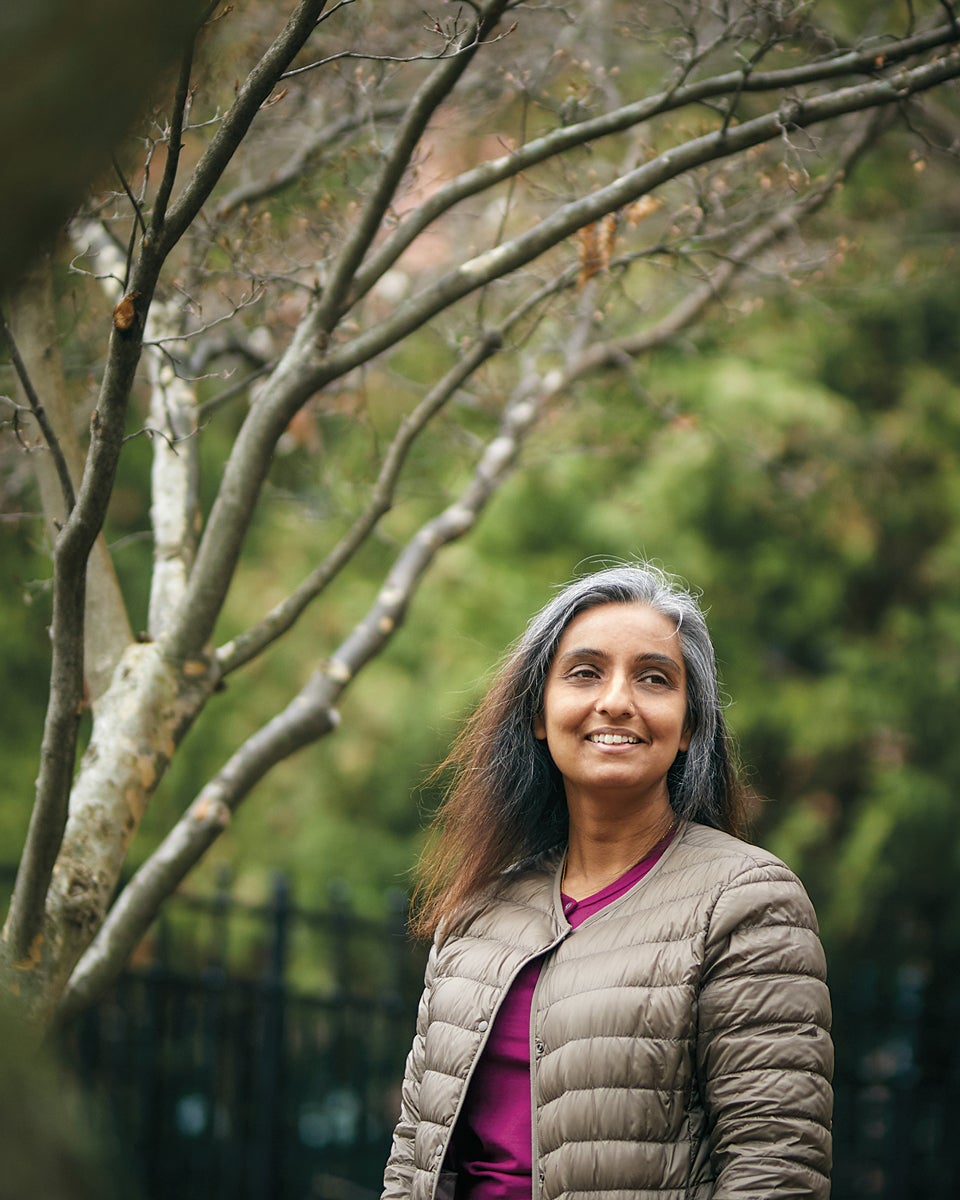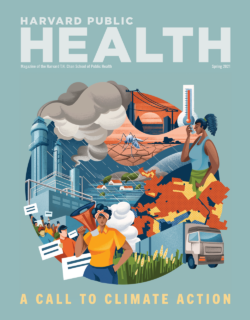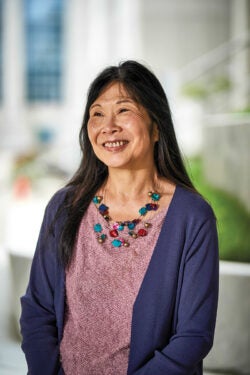
Research
Closing the childhood equity gap
When Aisha Yousafzai was growing up in the U.K., two of her cousins had disabilities—one in the U.K. and one in Pakistan. Despite both having family support, the Pakistani cousin had fewer opportunities and a lower quality of life. “Even access to basic rehabilitation or caregiver support was lacking,” Yousafzai says.
That experience led Yousafzai, associate professor of global health, to a career examining global disparities in child health for the crucial first few years of life. She spoke to freelance writer Michael Blanding about her work as principal investigator of two large randomized controlled trials focused on early childhood development in Pakistan—the Pakistan Early Child Development Scale-Up (PEDS) trial and the LEAPS (Youth Leaders for Early Childhood Assuring Children are Prepared for School) program—and creating equity for children throughout the world.
Sign up for Harvard Public Health
Delivered to your inbox weekly.
Q: What makes the first few years of children’s lives so critical to their development?
A: This is the period where the brain is developing most rapidly and is most sensitive to input from our environment and our experiences. Your genetics and biology are the road map for the way you develop, but your environment and experiences shape the quality of that development. The first three years of life are a window of opportunity to reduce risks—such as parental depression, violence, and neglect—and promote protective factors for healthy brain development, such as early learning opportunities.
Q: Why is there such a discrepancy in well-being for children in different parts of the world?
A: Multiple adversities predominantly affect children in lower-income countries, such as malnutrition and exposure to infectious diseases like malaria, as well as psychosocial risks. For example, in low- to middle-income countries, close to 20 percent of women experience postpartum depression, compared to 13 percent in high-income countries. All of these experiences affect the way children develop.
Q: What was the concept behind the PEDS trial?
A: The purpose was to provide parents in rural disadvantaged communities with early child development support in their children’s first two years of life. The program was designed to build on the local community’s strengths, traditions, and values, promote early learning in resource-scarce settings, and strengthen care for healthy development. We had a good amount of data showing that if we provided frontline health workers with the skills to work with parents to promote their children’s development, there would be a likely benefit to learning, language, and social-emotional development. We were able to use the Lady Health Worker Program—a national government program to provide community health services—to test whether this approach was feasible, effective, and accepted in the local community. These health workers provided advice on child care and practical tips and activities for promoting early learning. They also worked with families on solving problems related to parenting and child well-being.
Q: What were your takeaways from the trial?
A: We were able to demonstrate that the interventions made a difference to children’s development outcomes and that these benefits were sustained beyond the short-term gains at the end of the trial. More importantly, the interventions changed the practices of mothers and other caregivers, enhancing caregiver-child interactions and providing playful learning opportunities for the very youngest children—all while being cost-effective and integrating new interventions within routine health services.
Q: How are you continuing to develop these interventions by involving young people through the LEAPS program?
A: While it’s important to intervene in those first three years of a child’s life, to leverage the early gains you need a continuity of care from home to preschool to primary school. In the program’s area, there was a lack of skilled early child care and education workers, while at the same time huge amounts of youth unemployment, especially for women in rural communities. So, we’ve targeted women in the 18- to 24-year age group for training to deliver early childhood care and education services in villages where those services don’t exist. The goal is to ensure children receive continuity of development and learning services and to foster positive youth development and economic empowerment.
Q: What kind of results have you seen?
A: The pilot results have been very promising. Young children have seen improved school readiness, social-emotional outcomes, and early academic skills such as literacy and numeracy skills. Importantly, we are also seeing reductions in stress among youth and qualitative changes in their perceptions of their own autonomy, self-efficacy, and confidence.
Q: How has COVID-19 impacted childhood physical and mental health around the world?
A: COVID-19 has shed a light on the problems we already knew existed, including the lack of investment in high-quality child care and education services. For the most vulnerable children, school is not just a place of learning; it’s also a place of safety and security. The economic consequences of the pandemic put children, adolescents, and youth at risk. In addition to supporting a fair rollout of vaccines to the poorest countries, we need to be thinking about how we ensure that children are not left behind in the coming years. We must invest in making sure there is equitable access to schools and health services.
Q: You recently partnered with UNICEF to create an online edX course on global child development. What led to this decision?
A: Over the last 10 to 15 years, there’s been an explosion of interest in early childhood research, programs, and policies around the world. We’re now at the stage where we need to better understand what makes programs successful. So, the course takes us through a range of global programs, covering parenting, social protection, early childhood education, and health, and examines ways to improve the implementation of a program by using data. For example, we can use data to find out whether the program is reaching all children who need the services, whether the staff are adequately trained and supervised, or whether the program is improving outcomes for children. In other words, we are helping learners discover what makes some programs effective while other programs fail, how we take small programs to scale, and how we improve the impact and quality of programs already at scale to benefit more children.
Q: What keeps you passionate about doing this work?
A: For me, at the heart of it, it’s a story about equality and thinking about how the exposures young children have shape their life outcomes. If we work well and invest well in those early years and support vulnerable young children and families, there is an opportunity for us to really reduce disparities and inequalities in society and make a difference to a generation of learners.



